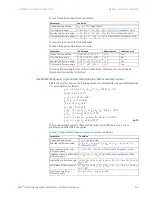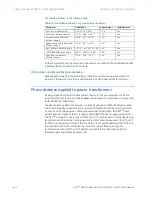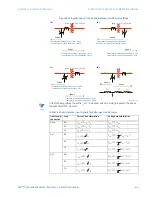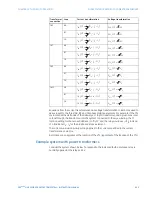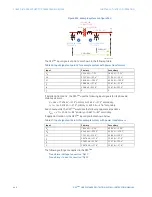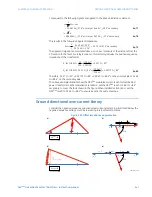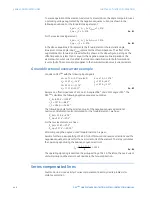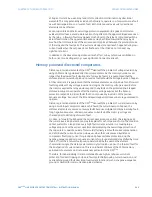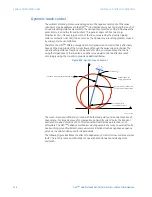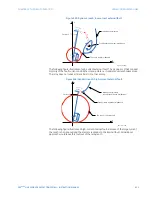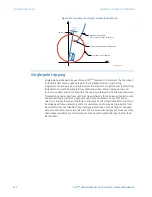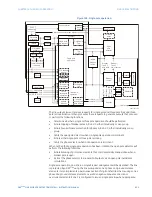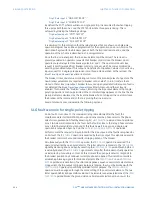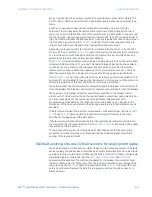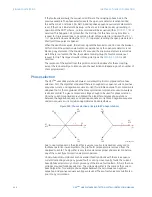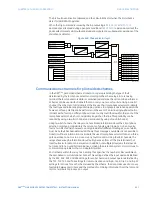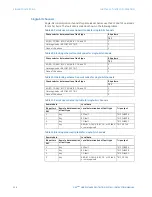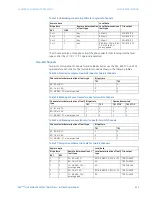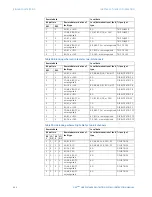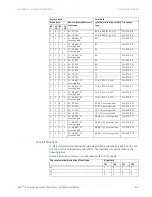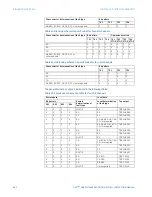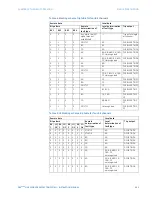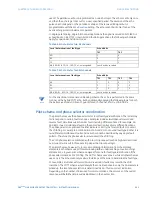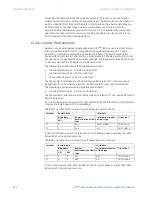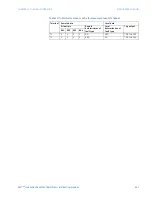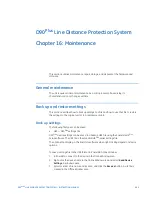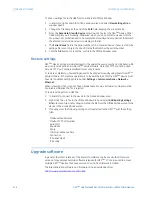
CHAPTER 15: THEORY OF OPERATION
SINGLE-POLE TRIPPING
D90
PLUS
LINE DISTANCE PROTECTION SYSTEM – INSTRUCTION MANUAL
655
zone 1 operate and zone 2 pickup operands that were picked up reset immediately. The
BG, CG, and BC distance elements remain operational guarding the line against evolving
faults.
As zone 2 or negative-sequence directional elements pickup due to the fault, the
permission to trip is keyed to the remote end. Assume here that a single-bit channel is
used. If so, no extra information is sent to the remote end, just permission to trip sent over
the TX1 operand. Upon receiving permission to trip over RX1, the POTT scheme decides to
trip. The scheme will check the phase selector for phase type identification and will issue a
trip for phase A by asserting the
POTT TRIP A
operand. This operand is passed to the trip
output and results in exactly same action as described above for zone 1.
Depending on response times, the actual trip is initiated either by zone 1 or by the POTT
scheme. At the moment the
TRIP 1- POLE
operand is asserted, the phase selector resets and
no other trip action could take place. After the trip command is issued all the picked up
elements are forced to reset by the open pole detector.
The
TRIP 1-POLE
operand initiates automatically a single-pole autoreclose. The autoreclose
is started and asserts the
AR RIP
operand. This operand keeps blocking the phase selector
so that it does not respond to any subsequent events. At the same time the operand
removes zero-sequence directional supervision from ground distance zones 2 and 3 so
that they could respond to a single-line-to-ground fault during open pole conditions.
The
AR FORCE 3-P TRIP
operand is asserted 1.25 cycles following autoreclose initiation. This
operand acts as an enabler for any existing trip request. In this case none of the protection
elements is picked up at this time, therefore no more trips are initiated.
When the recloser dead time interval is complete it signals the breaker control element to
close the breaker. The breaker control element operates output relays to close the breaker.
When pole A of the breaker closes this new status is reported to the breaker control
element, which transfers this data to the breaker failure, autorecloser, open pole detector,
and trip output elements. The response at breaker failure is dependent on the
programming of that element. The response at the autorecloser is not relevant to this
discussion. At the open pole detector, the blocking signals to protection elements are de-
asserted.
If the fault was transient the reset time would expire at the autorecloser and the
AR FORCE
3-P TRIP
and
AR RIP
outputs would be de-asserted, returning all features to the state
described at the beginning of this description.
If the fault was permanent appropriate protection elements would detect it and place a
trip request for the trip output element. As the
AR FORCE 3-P TRIP
is still asserted, the request
is executed as a three-pole trip.
The response of the system from this point is as described above for the second trip,
except the autorecloser will go to lockout upon the next initiation (depending on the
number of shots programmed).
SLG fault evolving into an LLG fault scenario for single-pole tripping
When an AG fault occurs the events unfold initially as in the previous example. If the fault
evolves quickly, the phase selector will change its initial assessment from AG to ABG fault
and when the trip request is placed either by the zone 1 or the POTT scheme, a three-pole
trip will be initiated. If this is the case, the
TRIP PHASE A
,
TRIP PHASE B
, and
TRIP PHASE C
operands will be asserted. The command is passed to the breaker control element and
results in a three-pole trip. At the same time the recloser is initiated as per settings of the
trip output. As the
TRIP 3-POLE
operand is asserted (not the
TRIP 1-POLE
operand) the open
pole is not activated. Because the AR RIP in progress is asserted, the phase selector is
blocked as well.

